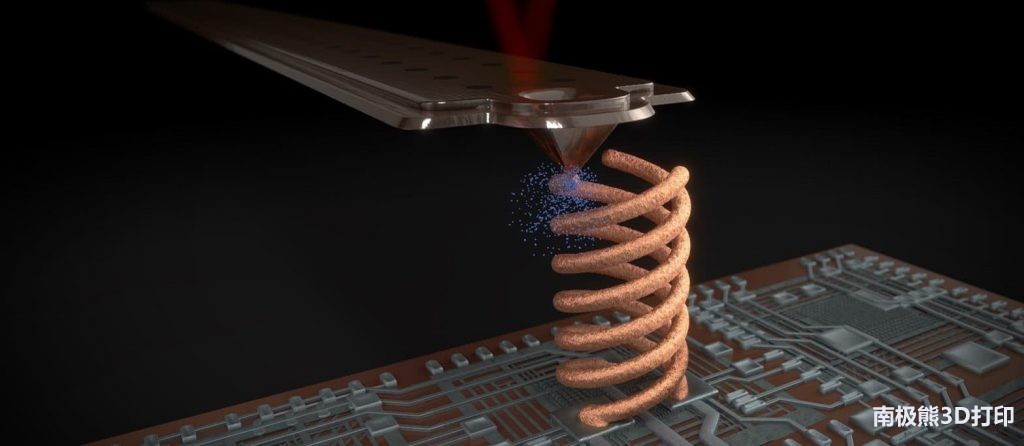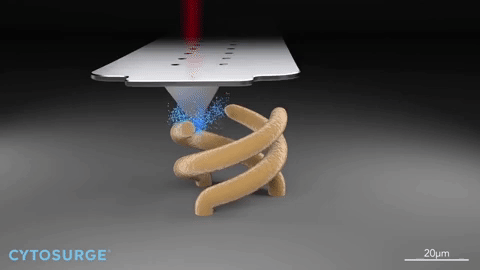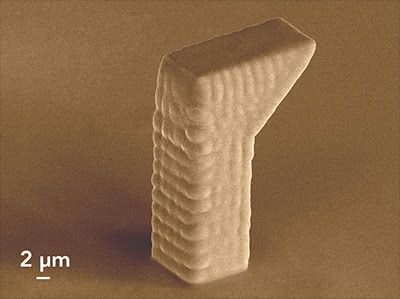On June 11, 2018, Antarctic Bear learned from foreign media that the Swiss nanotechnology company Cytosurge announced the upgrade of its FluidFMμ3D printer. The new features allow additive manufacturing to achieve micro-manufacturing and 3D printing on existing structures.
Antarctic Bear previously reported that the Shenzhen Mofang material can achieve micro-nano scale 3D printing. The material used is photosensitive resin. The Cytosurge reported this time uses metal materials.

â–³ FluidFM printing on the microchip, the picture is from Cytosurge
Cytosurge was established in 2009 as a branch of the Federal Institute of Technology in Zurich. Due to the lack of technology to produce micro and nano metal structures on the market, it began to develop the FluidFM process.
Through an electrochemical process, FluidFM technology uses a micropipette to control the deposition of an ionic liquid (copper sulfate solution) through a 300-nanometer pore size. The solution is then converted into a hardened material that can be deposited on the printing bed by chemical reaction with the electrode.
When working at room temperature, the printer is capable of producing high-quality metal object structures from 1μm3 to 1'000'000μm3. Designs such as overhang structures at 90-degree angles can use this process for 3D printing, so that no structural support is required when printing complex 3D objects.
After the first release of FluidFM technology, Dr. Pascal Behr, Co-founder and CEO of Cytosurge, said: "The newly developed 3D printing method is applicable to a variety of market applications. We have seen potential applications, especially in the watch and semiconductor industry and medical Device field. "

Cytosurge expands existing functions by adding two high-resolution cameras. These cameras are integrated with FluidFMμ3D printers, which can achieve more accurate 3D printing, and can be 3D printed on existing structures.
The task of one camera is to image the object or surface to be printed, and the other camera is used for system processing, printer setup, calibration and computer-aided alignment.
Users can 3D print metal objects on microelectromechanical systems (MEMS) that include integrated circuit boards.
Applications of the upgraded FluidFMμ3D printer include submicron experiments for life science and physics research.

On the Antarctic Bear website, although large projects often make headlines, there will also be a 3D printing manufacturing revolution at the micro level.
PhotonicProfessionalGT3D printer of Nanoscribe company in Germany is an example for manufacturing small high-resolution polymer components, which are used in medical and micro-machinery.
Last year, researchers at the TUWien additive manufacturing department demonstrated high-precision metal 3D printing, seamlessly printing a tiny castle on the tip of a pencil.
Cytosurge believes that FluidFMμ3D printer can open the door to a new world of metal additive manufacturing.
Compiled from: 3dprintingindustry

Editor in charge: null
Chair Set,School Canteen Chairs,School Classroom Chairs,Classroom Sketching Chair
AU-PINY FURNITURE CO., LTD , https://www.jmaupiny.com